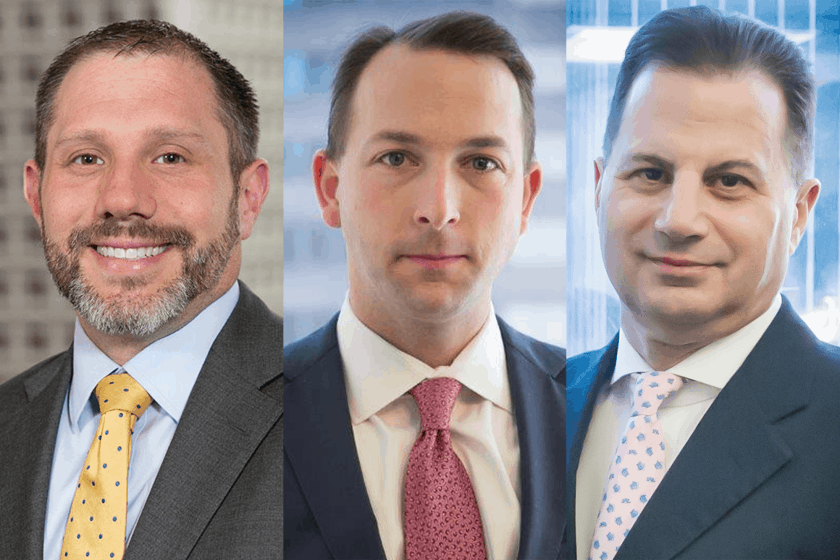OpEd: Never Let a Capital Structure Crisis Go to Waste

The following article is Part One of a two-part series and was written by Gordian Group LLC president Peter Kaufman, partner David Herman and managing director Liam Ahearn. The views expressed here are entirely their own.
Private equity firms with portfolio companies experiencing capital structure challenges may not believe it, but opportunity is knocking. It’s the opportunity to either purchase their debt at a discount or to revest the portfolio company with a new capital structure that benefits shareholders at the expense of its lenders. Uncertainty in the financial markets or in the company’s own markets can be utilized far more nimbly in negotiations by the sponsor than by its creditors.
- The classic scenario is that a portfolio company runs afoul of certain covenants (usually leverage) or experiences liquidity pressure. The reasons can range from macroeconomic issues such as Covid-19 to faltering operational underperformance leading to an overleveraged balance sheet to all sorts of other internal and exogenous factors.
- Lenders are fearful of uncertainty. The Lender 101 playbook is to demand that sponsors/owners inject new equity beneath the existing capital structure — or as we call it, “Mount Debt” — all in return for only short-term waivers (three to six months) and fees. Lenders do not expect sponsors and their portfolio companies to push back on these asks.
- Sponsors with vision and will can and should reject this fund-more, go-along, get-along approach. If well advised, sponsors can impose a shareholder- and management-friendly capital structure overhaul, obtain multiyear covenant relief and debt service holidays, or both.
- Gordian views equity value in these situations as not determined by a strict priority waterfall but rather from the equity-centric standpoint of (i) option value, (ii) control value and (iii) net operating loss value.
- In connection with this revesting, sponsors may now be willing to inject new capital if they have it available.
In short: We advocate elegant and comprehensive capital structure solutions; not temporary Band-Aids. And we only want to see new sponsor funding come in as part of an overall fix — and not before. We also want to dispel the myth that a financial restructuring equates to creditors receiving all or most of the equity. That does happen, but by and large only when financial advisers involved are unable to give unconflicted advice to boards (for example, when they also advise financial creditors in other deals).
Lenders extend credit with an entirely different of set of parameters than private equity firms invest equity because they have much less risk tolerance. As such, lenders have different priorities in restructurings: Lenders want to minimize their risk by seeing junior capital come in, reducing their exposure, shortening maturities and, at almost all costs, avoiding an expensive bankruptcy that will likely create uncertainty (and volatility). They also want to keep the company on a short leash through tight covenant packages.
On the other hand, if equity value is viewed as an “option,” then it is important for sponsors to assess alternatives from the standpoint of how they may utilize the key drivers of that option value (i.e., life of the option, enterprise value, amount of debt, volatility of asset pool). Importantly, the value of that option (equity value) will increase as the runway from the lenders increases, as the cost of the option decreases or both.
This means that sponsors will put a premium on minimizing new money and extending the runway with lenders (whether via revised covenants, an extended maturity date or both). Since Chapter 11 is a venue in which the latter can potentially be imposed on the lenders (i.e., a cram-up that results in an extended maturity date and reset or reduced covenants and interest), sponsors will necessarily have a different risk/reward assessment than lenders on the merits of a potentially bankruptcy.
While Gordian Group always advises its clients to avoid a bankruptcy if at all possible, this dichotomy creates leverage in negotiations with lenders that should many more times than not result in a consensual — and, for the sponsor, very advantageous — resolution out of court.
For example, in certain market environments, a fast-track sale may not result in a desirable outcome for a company’s creditors but could present an existing sponsor with an opportunity to achieve the necessary deleveraging by being a buyer in such a process.
As an aside, well-advised shareholders can also retain significant value and control in workout situations in connection with a company’s NOLs. Change-of-control transactions that see creditors take control from shareholders can significantly impair a company’s ability to use NOLs, thereby meaningfully reducing future cash flows. If shareholders remain in control, however, the NOLs are usually left untouched and can be fully utilized (including to shield cancellation of debt income, or CODI). This is value that is often ignored by both companies and creditor constituencies in restructuring negotiations, and it is imperative that the company and its advisers adroitly use the leverage related to control and NOLs in any negotiations, lest it leave value on the table for its shareholders.



